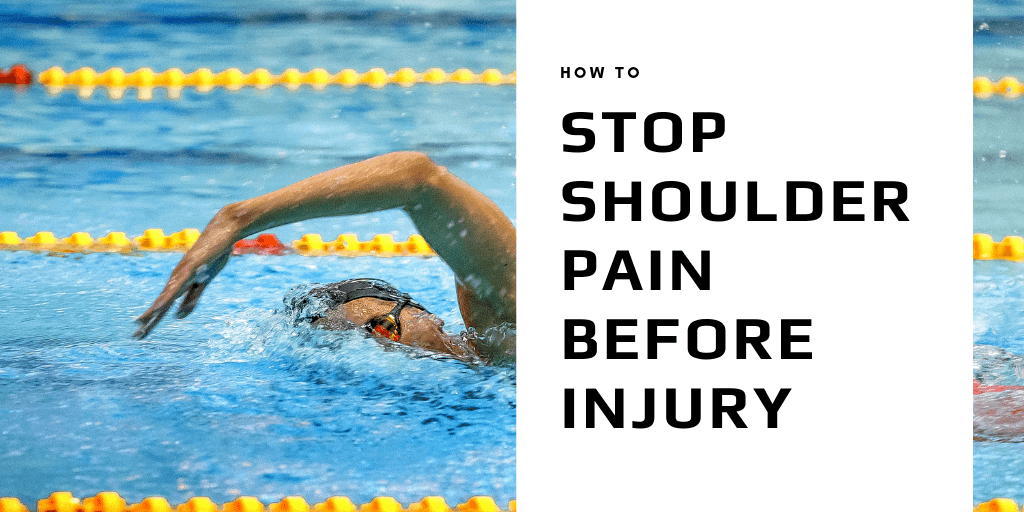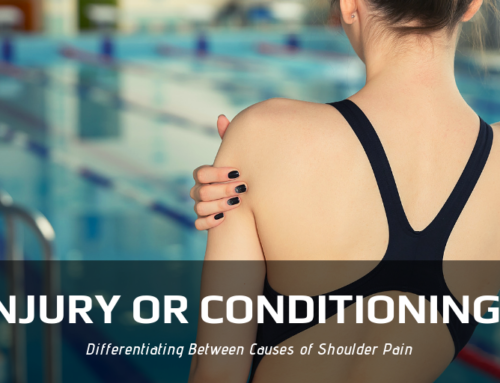Of the three primary risk factors for shoulder injury (excessive training distance, muscular imbalances, and improper technique) only technique is controlled by the swimmer. That makes changing technique the most effective way for a swimmer to prevent injury and avoid pain.
In butterfly and freestyle, the arm entry can be especially stressful. Because of this, adjusting technique elements in the arm entry can make a huge difference not only in a swimmer’s shoulder pain but also in a swimmer’s times. Here’s what you need to consider.
Freestyle Arm Entry
For many swimmers, the hand is closer to the surface than the shoulder at the completion of the freestyle arm entry. This position generates only minimal propulsive force and is directly related to joint aggravation or “impingement syndrome.” It also provides a “triple whammy” to swimmers: (1) it stresses the shoulder, (2) it wastes time by slowing the stroke rate (often .1 – .3 seconds each stroke!), and (3) it wastes effort by generating less propulsive force on each stroke. Still, this technique of arm entry is common, accepted, and often promoted.
Some swimmers intentionally keep the arm in the entry position as the opposite arm begins to recover. This technique, known as catch-up stroke, leaves the arm in a weak, awkward and stressful position and causes a timing delay as it produces gaps in propulsion. A swimmer cannot substantially increase hand force until the hand submerges below the level of the shoulder.
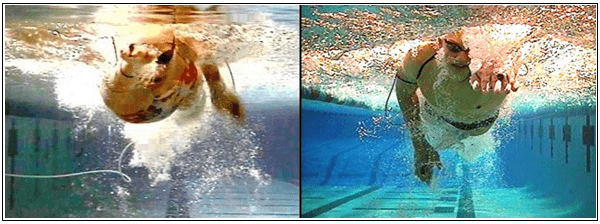
Two different positions at the completion of the arm entry: hand above the shoulder (left) and hand level with the shoulder (right).
Modifying the freestyle arm entry with a downward angle positions the hand deeper than the shoulder to immediately begin the pull with elbow flexion and allows the transition from entry to pull in a continuous motion. The resulting arm position is stronger (more mechanically advantageous), and less stressful on the shoulder.
In the image that follows, a biomechanical model shows an effective freestyle arm entry that provides a mechanical advantage at the beginning of the pull. Hand force increases quickly and dramatically with minimal shoulder stress.
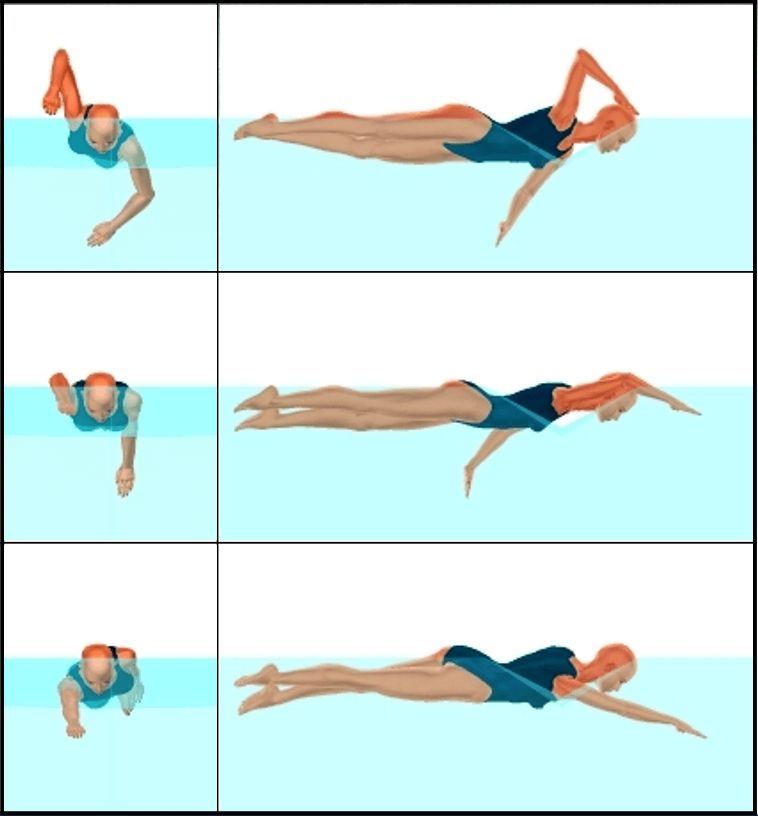
Arm Entry in Butterfly
In butterfly, many swimmers complete the arm entry with the hands closer than the shoulders to the surface with the head slightly below the surface. This arm position stresses the shoulders and results in a weak and awkward position to begin the pull.
The extreme – but all too common – examples below of an ineffective butterfly arm entry shows the position that is classically related to joint surface aggravation or “impingement syndrome.”
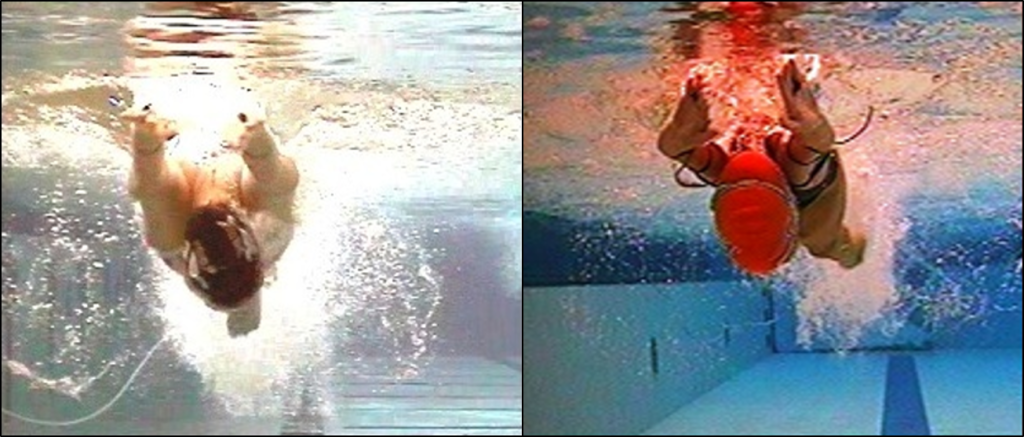
In contrast, a downward arm entry angle results in a stronger arm position, less wasted motion, and reduced shoulder stress.
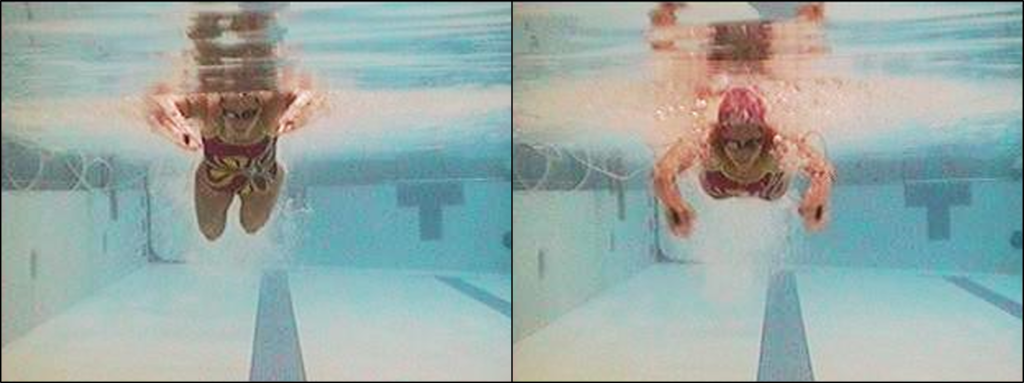
In the image that follows, a biomechnaical model shows an effective arm entry that immediately begins the butterfly pull with elbow flexion. This allows hand force to increase quickly and dramatically with minimal shoulder stress.
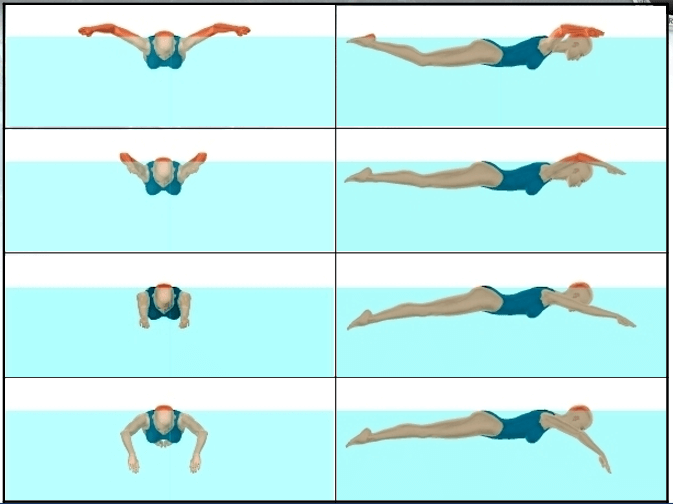
Whenever the hands are above the shoulders, the arms are in a weak and awkward position. Stress to the shoulder is significant and mechanical leverage is poor. In fact, a swimmer can only generate minimal force – in either freestyle or butterfly – until the hands submerge below the level of the shoulders. This “wasted time” is a universal problem of dramatic proportion and is well-documented, even in swimmers at the highest level of competition.
The Bottom Line?
Adjusting technique elements in the arm entry can make a huge difference not only in a swimmer’s shoulder pain and injury but also in a swimmer’s times.

